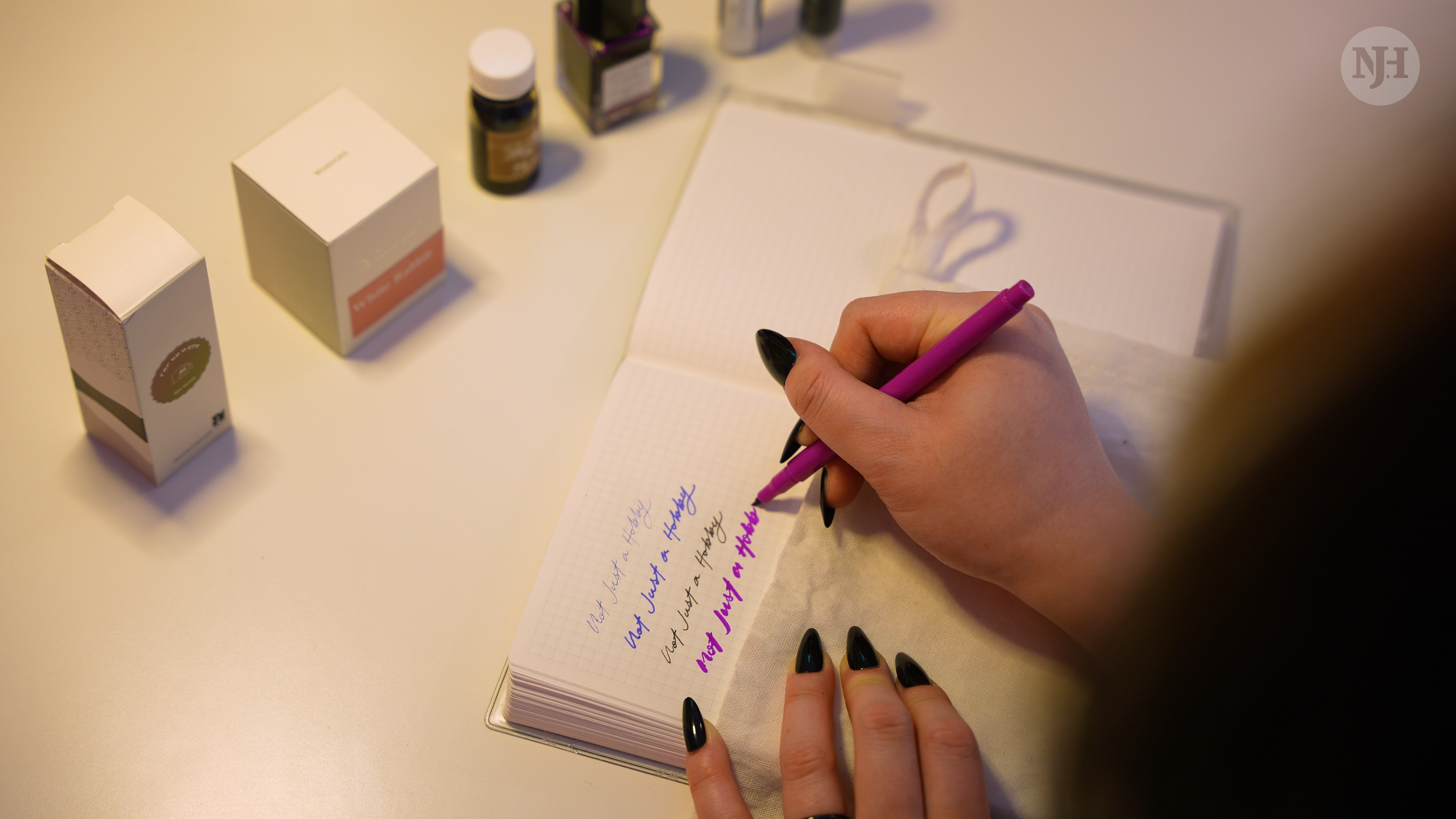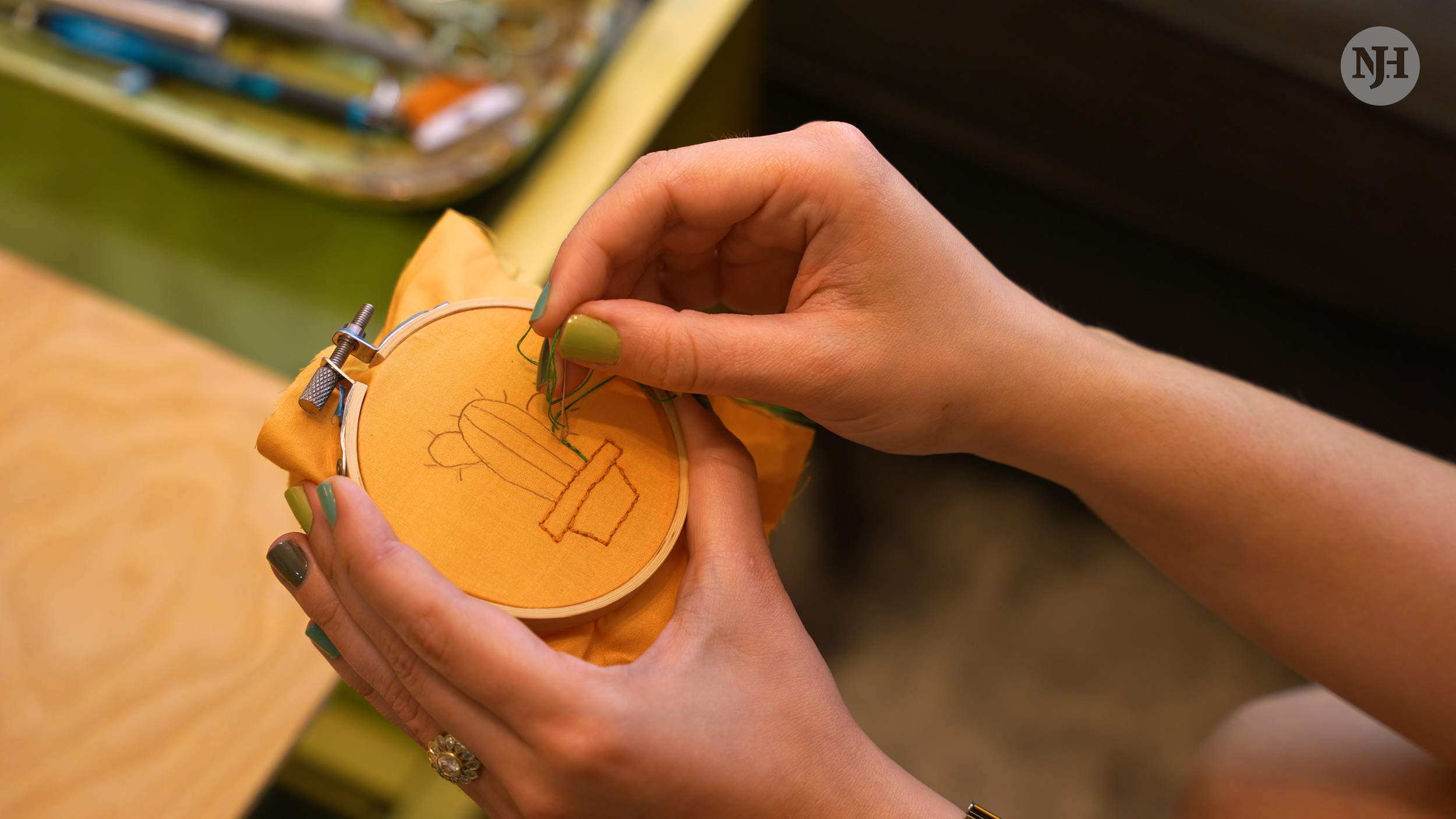Calligraphy
written by Emm @paperemm
When I was just a wee child, I used to envy the kids in school who had really nice cursive. Mine was criticized often because I never used enough of the up-down strokes that were 'proper' for the letters N or M. Even printing—regular handwriting sans cursive—was the subject of my jealousy. Mine was uneven and messy, and I couldn't decide how I wanted to write my letter Y occasionally, so it swapped styles on the same page.
In my quest to improve, I found myself choosing typefaces on the computer and doing my best to emulate them. My family didn't have a printer, so I'd sit there staring at a monitor, looking down to check on my paper so frequently—up and down, up and down—I could've been headbanging at a metal concert.
The first typeface I ever tried to emulate was Century Gothic (which, fun fact, uses less ink due to its letter thickness, but the trade-off is that it uses more paper). It's an airy, bubbly typeface, and that fits the vibe I wanted as a kid.
It did not go well.
Fast forward to my design degree, where one of my classmates had the prettiest brush calligraphy. I wanted that, and this time, I was determined. I scoured Instagram, trying my best to figure out how others did it. Learning resources weren’t as accessible then, so I even attended a brush lettering workshop, which taught me some fundamentals (though with current resources, online would be more than enough for most). My first few notepads of practice looked like hot garbage, and I doubted my ability for a long time. But I kept practicing. Things got better when I stopped comparing myself to others on social media.
One day, I stumbled upon fountain pens. I can't tell you how it happened, but I can tell you that I fell in love fast. Once I bought my first fountain pens and inks, I was a goner.
Have you ever heard the phrase, "It's like watching paint dry"? Sometimes, I think about that when I'm writing or swatching fountain pen inks. I'll realize that I've been hovering over my desk like the Hunchback of Notre Dame, and my neck starts to hurt (yours probably won't, I'm just a gremlin]) and pull back. But the entire time, I've been entranced by the way the ink pools, how the shimmer sparkles in the light, and the way some inks start to show a different colour sheen as it dries.
So yeah—sometimes it's like watching paint dry. But much cooler.
I wanted to write as much as I could just to use my pens. Journaling, note taking—I even found solo journaling RPGs, which were another reason for me to write. And the more I wrote, the more intentional I got—this was tons of opportunity to practice. Why not use it?
So I started to write slowly, with purpose. I figured out what worked for me and the style of each letter I liked. Soon, it became just how I wrote, and I REJOICED when I realized it. The more I wrote, the larger my fountain pens and ink collection grew. It’s an ouroboros now.
I started out with modern calligraphy (the less structured, sometimes bubbly handwriting), and then brush lettering (done with a brush pen, sometimes a Crayola marker). Once I felt accomplished because I managed to do the thing, I tried my hand at Copperplate (much more technical), which did not go well because my control wasn’t, and still isn’t that great.
Recently, I've gotten into Uncial calligraphy, which you may associate more with how things are written in The Lord of the Rings. It's technical but only consists of a few strokes, so it's neat to practice!
Honestly, if you want to do calligraphy, you can. Pick up a pen or pencil—look at inspiration, or even just admire typefaces and try to replicate them. Remember that progress is often slow, but that's kinda the point. The joy is in the journey, not just the Instagram-worthy results.






The next level
of writing
It’s a hobby that we’ve all already started.
Calligraphy is the art of writing. From each letter to the overall body of words, it’s a way to express your interpretation of words.
And you truly get to make it your own. We all have our own unique handwriting, you’ll have your own unique calligraphy.
Or you can start by mimicking fonts.
It’s all for you to dive into.
We didn’t even mention all the pens and inks.
Paper and pen
Starting can begin with just any pen and piece of paper.
The only difference is now being intentional with how you’re writing. The size, style, and look.
Try something different than how you normally writing. Try to make it cool. Or complex. Or silly.
Discover more hobbies.
Discover more of Emm’s calligraphy on Instagram @paperemm.








